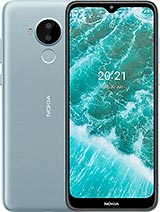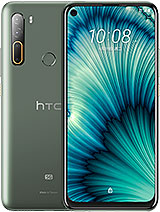The Problem with Fast Chargers. By Mrwhosetheboss
I feel like every other day, we see a new company boosting about how fast their new smartphone can charge. But what a lot of these companies don't tell you are that faster charging doesn't come for free, so very quickly. The way your battery works is with two poles a negative and a positive at the negative end. You have a ton of free electrons at the positive end, you have less so naturally, those electrons just want to flow from that negative end to the positive and along the way they can power. Whatever components you put in their path, once they've all flowed, your battery is dead and that's where charging comes in, we can use electricity to basically push electrons back to the negative side. Creating that difference again- and so really all of us charger is doing- is pushing those electrons back faster, but there are some problems to this.
For starters, it means that in any given amount of space, you actually get less battery capacity in every battery. Between that positive and negative pole, you also need a separator. It's there to make sure that the electrons don't just go straight from one side of the battery to the other and that they actually go through the circuit that you want them to, but see the faster. You want to charge your battery, the thicker. You have to make this separator to keep the battery stable and so the actual amount of usable battery you have the battery density falls and if you want to charge ultra-fast, like a lot of these new phones are starting to do.
Furthermore, you've got to take this a step further and also split the battery itself into two separate batteries which, as you can probably guess, wastes even more space. This is why you pretty much never see ultra-fast charging on anything but big phones, because it takes up so much room and, if you're enjoying this video by the way a sub to the channel would be tremendous number. Two faster charging means faster. Electron movement, which, generally speaking, creates more heat and heat is not a battery's best friend. It can slowly and subtly change its physical structure, which will make its ability to hold charge fall over time as a very rough estimate.
Even if you kept your battery at 30 degrees Celsius, you could expect to lose 20 percent of your battery capacity over a year and if you kept it at 40 degrees Celsius, something like 40 could just disappear. This is why it's recommended that, when your phone is charging try to leave it alone, it's already going to be warm from the charging using. It is only going to add to that. You might have seen some gaming phones recently which have USB-C ports positioned to be able to charge while gaming- I wouldn't do it. The only one exception is, if you're going to use bypass charging, which basically just forces your charger to power the components of your phone directly and not touch the battery, so your battery percentage wouldn't go up, but it also wouldn't go down.
I know ASUS has this on their ROG phone 3, for example, now side note this potential heat damage to the battery is also one of the many reasons that wireless charging kind of sucks. If you have the option to charge your phone with a 30 watt, wired charger or a 30 watt wireless charger, the wired one is the way to go. Wireless will use up more energy and all that extra energy ends up has is heat. Also, a lot of wireless chargers just promote themselves as a way to always keep yourself topped up at 100, but actually this is the exact opposite of what's good for your phone, so you remember how, when the battery's full we've basically pushed all of those electrons, so that they're sitting in the negative pole and when your battery's empty, how they all be sitting in the positive? Well because of this, both 100 and zero percent charge are actually the two most imbalanced and high pressure states to leave your battery in an ideal world. You would constantly keep your battery at 50 percent, where the free electrons are evenly distributed between both the negative and the positive.
You might notice that when you next go get a new phone and power it on, for the first time that the company you bought it from will have pre-charged it to something close to 50, because they know that it's going to be sitting on store shelves for a while, and this is the way to get the least battery degradation. Okay, I kind of sidetracked there a little, but that brings me on to the third issue. With fast charging, the more powerful charging becomes, the more you'll notice diminishing returns. Have you noticed how, whenever manufacturers quote how fast their charges are, they'll always use the starting figure? How fast can it charge the first 50, for example? Well, that's because the wattage you get given is not actually the wattage that your phone will constantly be charging at. It's just the maximum.
It can reach, and it'll reach that maximum somewhere during that early part of charging, as your battery starts to get full, no matter how powerful your early charging is. You have to drastically slow down to protect the battery's health and, as a result, a 60 watt. Charger is not twice as fast as a 30 watt charger and a 120 watt charger is not even close to twice as fast as a 60 watt charger. So fast charging does through some avenue or another mean you're going to get less battery. As you use your phone, and this is why some companies are integrating the option to slow charge, even marketing it as a feature which I get.
It sounds crazy, but hopefully now it makes a bit of sense, and if I had to guess, I would say that this is also part of the reason why it took apple so long to switch away from giving people these tiny little five watt charging bricks. Obviously providing these in the box will make them more money because they can then sell fast chargers separately, but they also probably figured that, because most of their users were fine, they didn't really complain about the existing charging speeds. If they raised it. All it was really going to do is reduce the longevity of their phones and because Apple makes so much money from software and services. They actually want people's iPhones, which are the portals to that content to last as long as possible.
This is why they provide software updates for five years solid on every model. It's why they even tried to slow down older iPhones to preserve their battery life apple, wants its phones to last a long time. That's part of the reason why they haven't introduced 65 watt fast charging. I talk about fast charging and the problems it causes, but I do just want to stress that it's not as bad as some people make it out to be. There are some redeeming factors for starters.
Some people seem to have this idea that slow charging is good for your battery. I wish this was true, but no, no matter how careful you are no matter what charge you use your phone after two years of charging and using the battery is not going to be able to last as long as it once did. Secondly, fun fact: when your battery shows 100, it's not actually 100 full most manufacturers, they add a buffer into the smartphone so that even when it looks like it's full, there is a little of extra capacity. So you don't completely fill it and damage it big time. But on top of that, historically, one of the problems with faster charging is that your device would charge up really quickly, but then continue to receive charge, even when it's full and that can be damaging, but nowadays most manufacturers.
They designed their included power bricks to be able to communicate with the phone they were made for to actually cut the power when you hit 100. So over charging isn't really a problem either, and the cherry on top is that a lot of phones now use something called optimized charging where the battery will be prevented from hitting 100 until you actually need it to so. My iPhone, for example, has actually learned that I usually get up in the morning at 7 30 a. m. So when I go to bed- and I stick it on charge, it'll charge to 50 straight away and then throughout the night, it'll just sit at that 50 figure right up until an hour before I wake up when it'll start filling itself.
This is now a default feature on iOS 13 onwards, and some android phones do it too. Before I made this video, I actually spent some time talking to Xiaomi, who is a strong advocate of ultra-fast charging speeds, but also ASUS, who is a strong advocate of larger higher density batteries, with a slower charging speed and the consensus from everything I learned is that there is a sort of sweet spot. So in 2020 I'd say something like 30 watt charging is roughly what you need to give you speed, but also keep the heat relatively low and allow you to have a large high density battery. Besides going down this route of having a high capacity battery will naturally speed up your charging anyways. Think of it like this, if I charge both a three thousand William hour cell and a five thousand William hour cell with the same power at the same time, the five thousand million power will reach three thousand way before the three thousand million power.
One will because of that whole concept of charge, slowing down as a battery, starts to fill up. So when people say that they don't like the idea of fast charging, I get it for the same reason that display resolution on phones hasn't really gone up in the last six years, for the same reason that we're not seeing 4k and 8k screen panels. There are strong, diminishing and often negative returns to faster charging. I'm sure that over the years we'll be able to kind of shift that sweet spot further out with the introduction of new materials like graphene, but at the same time I think that idea of a sweet spot, this compromise between battery capacity and charging speed will stick around. If you enjoyed this video do consider subscribing that'd be amazing.
My name is Aaron. This is Mr who's, the boss, and I'll catch you in the next one.
Source : Mrwhosetheboss


























